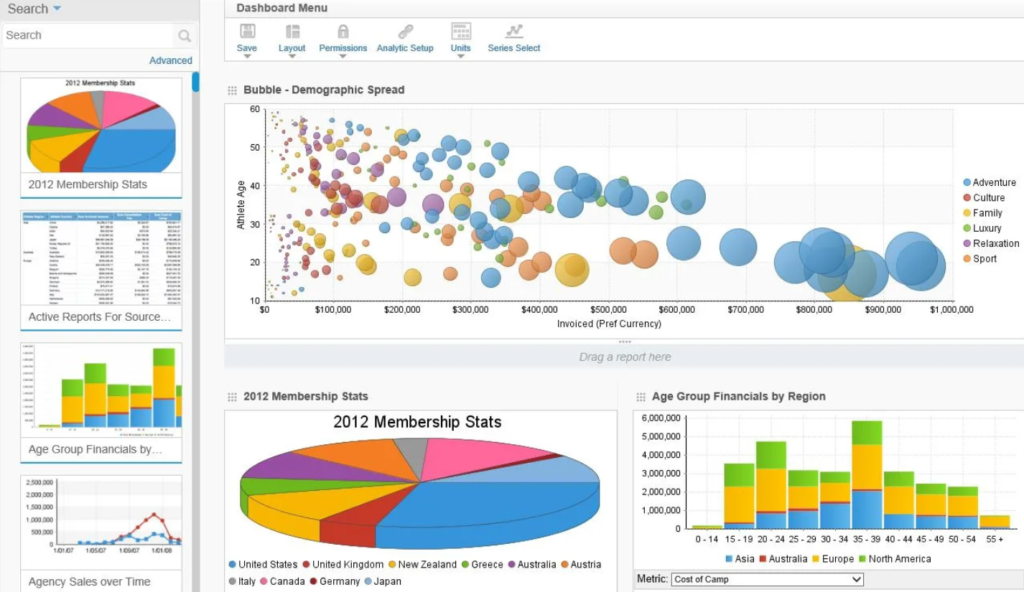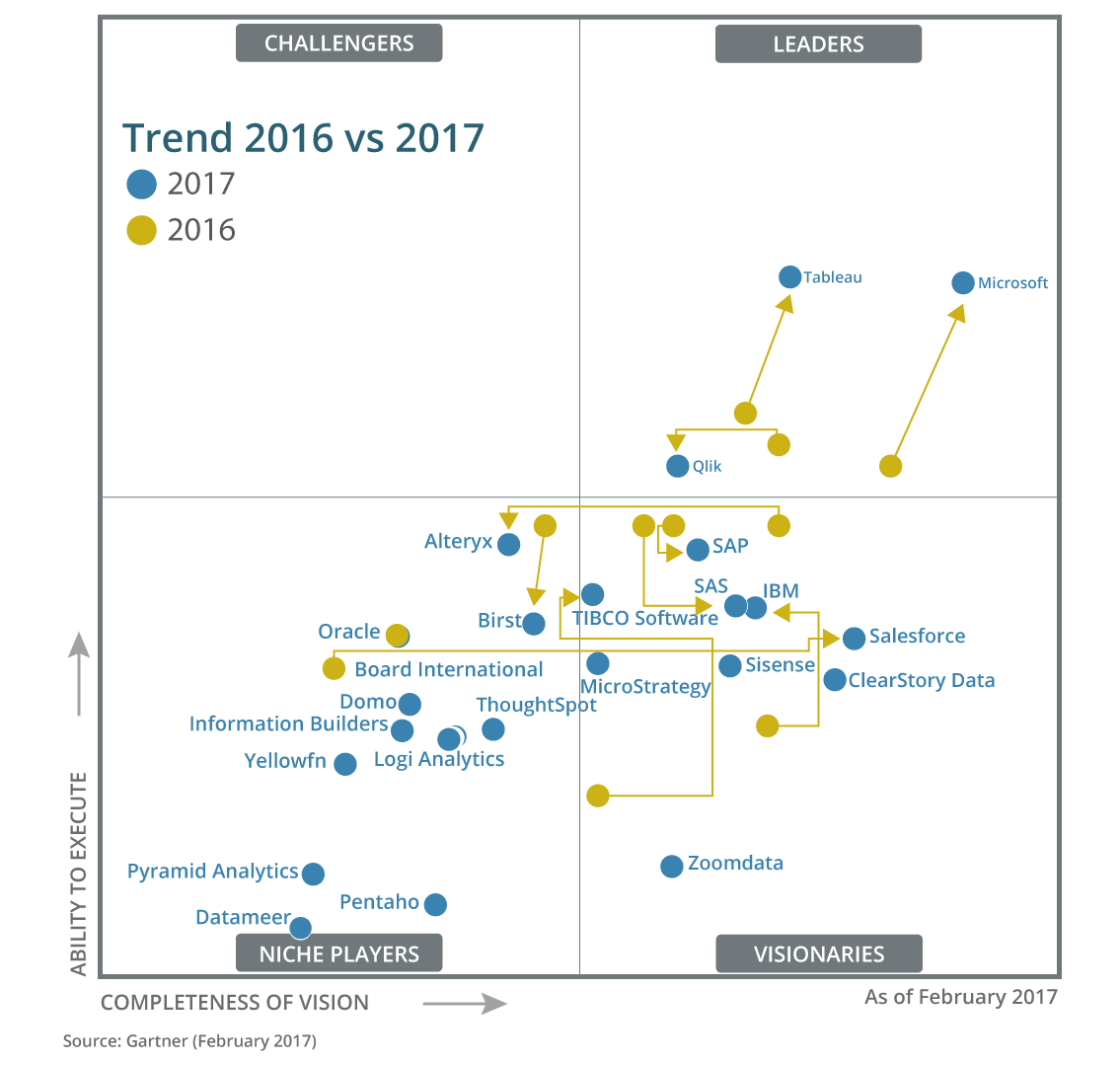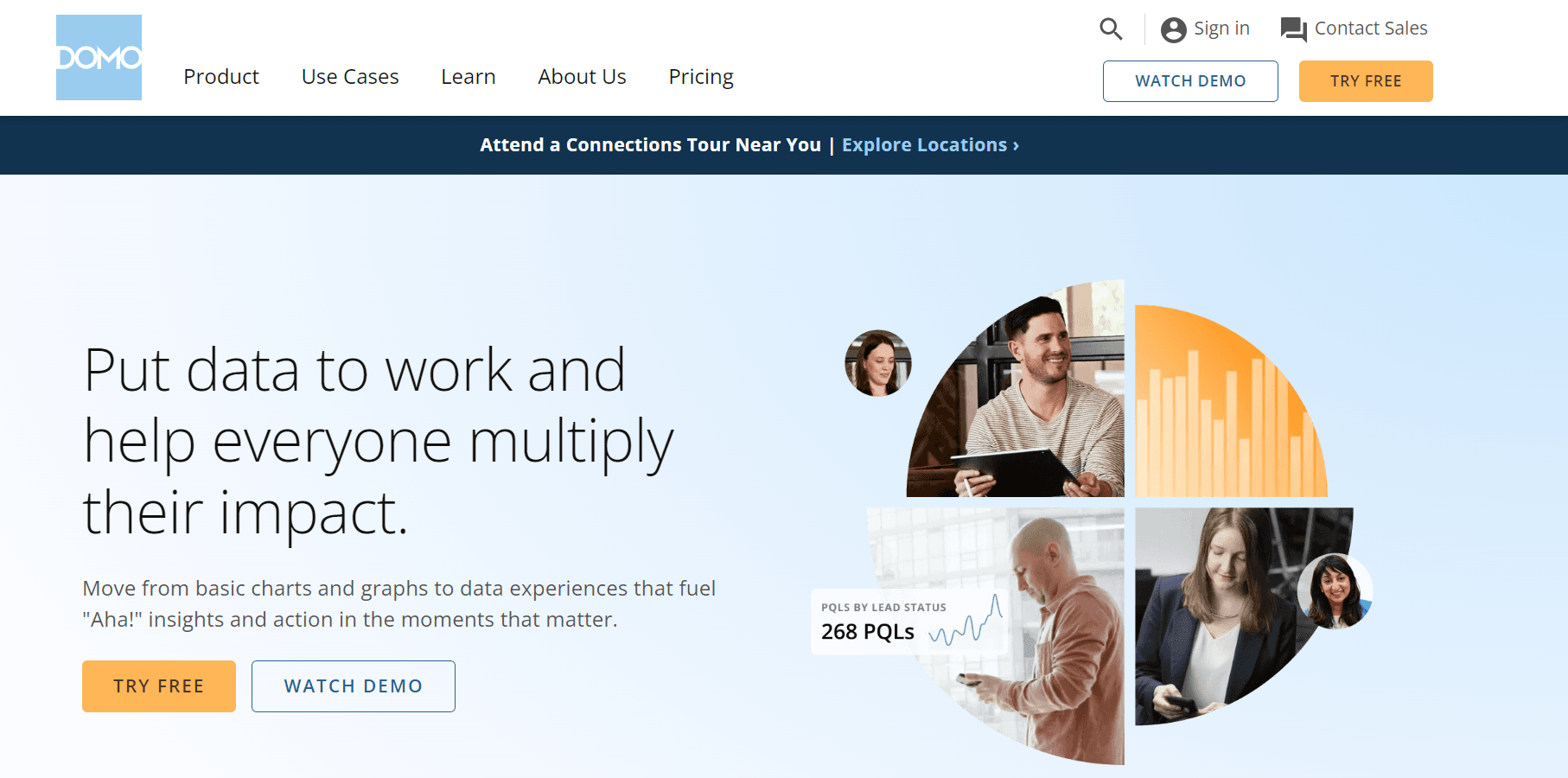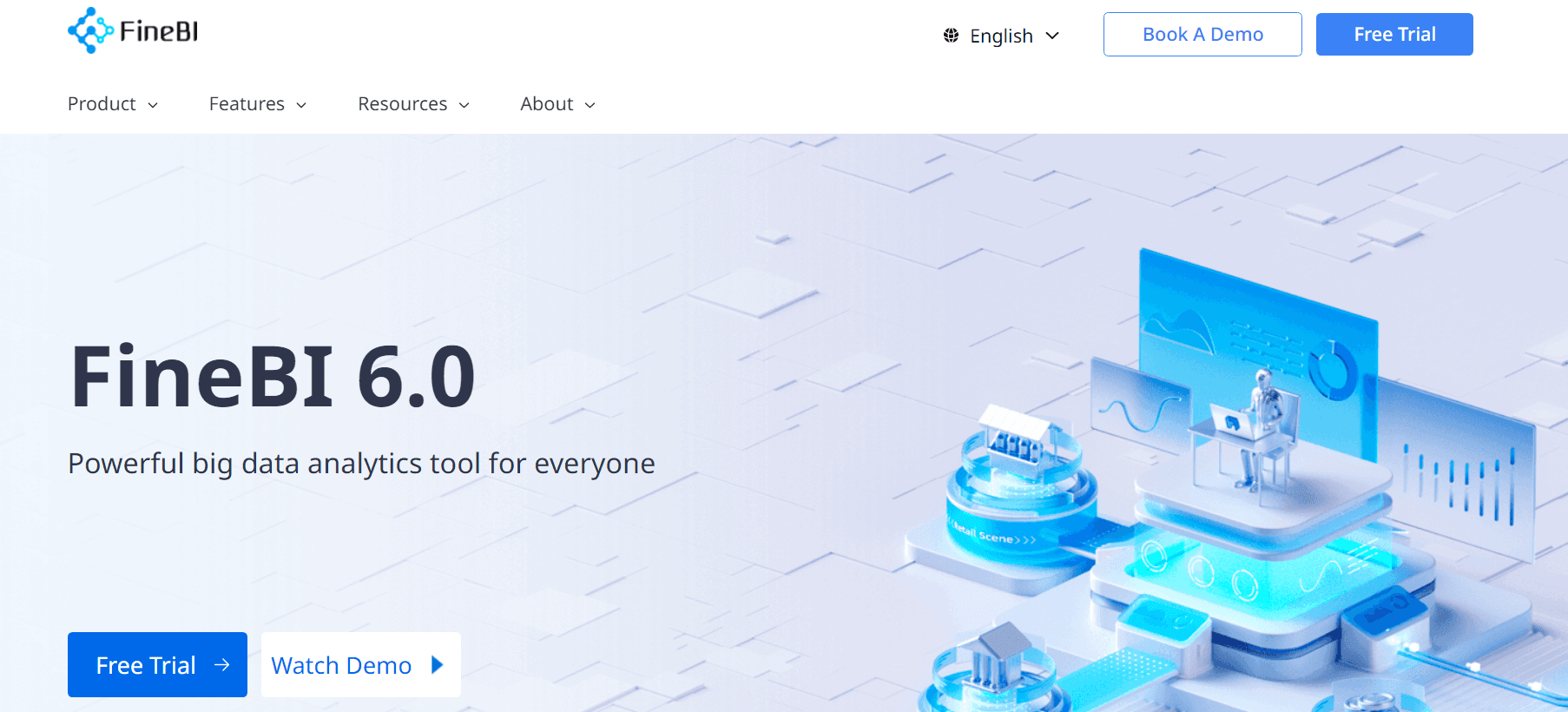Unlock Insights with Business Intelligence Platforms
The modern business landscape is awash with data, a torrent of information generated from every customer interaction, operational process, and market shift. Navigating this vast ocean to extract meaningful insights and drive strategic growth can feel like an insurmountable challenge. This is where business intelligence platforms step in, transforming raw data into actionable knowledge that empowers organizations to make faster, smarter, and more informed decisions. They are no longer a luxury for large enterprises but a fundamental tool for any organization aiming for sustained success and competitive advantage.
At its core, a BI platform is a sophisticated software solution designed to collect, process, and analyze disparate datasets. It provides a holistic view of business performance, revealing trends, patterns, and anomalies that might otherwise remain hidden. From sales figures and marketing campaign performance to operational efficiency and customer behavior, these platforms synthesize information from various sources into cohesive, understandable formats.

The true power of BI platforms lies in their ability to democratize data. They empower users across all departments – from C-suite executives to frontline managers – with the tools to explore data independently, create custom reports, and visualize complex information through interactive dashboards. This shift from relying solely on IT departments for reports to fostering a data-driven culture is a hallmark of modern, agile businesses.

In an era defined by rapid change and intense competition, the capacity to quickly adapt and innovate is paramount. Organizations that leverage BI platforms gain a significant edge, identifying opportunities, mitigating risks, and optimizing processes with unparalleled precision. This article will delve into what constitutes these powerful tools, their indispensable features, the myriad benefits they offer, and how to choose the right one for your specific needs, while also glancing at the exciting future of business intelligence.

What Are Business Intelligence Platforms?

Business intelligence platforms are comprehensive software suites that facilitate the collection, storage, analysis, and visualization of data derived from various business operations. Their primary purpose is to help organizations understand their current state, identify trends, predict future outcomes, and ultimately make more data-driven decisions. They bridge the gap between complex raw data and easily digestible insights.
![]()
More than Just Reporting
While traditional reporting is a component of BI, modern platforms go far beyond static reports. They offer dynamic dashboards, interactive charts, and drill-down capabilities that allow users to explore data at multiple levels of granularity. This interactivity fosters a deeper understanding of the underlying factors influencing business performance. Unlike simple spreadsheets, BI platforms are built to handle massive datasets, integrate data from disparate sources, and provide real-time or near real-time insights.

The Data-to-Insight Journey
The typical journey within a BI platform involves several stages. First, data integration and ETL (Extract, Transform, Load) processes pull data from databases, ERP systems, CRM platforms, websites, and external sources. This raw data is then cleaned, transformed, and loaded into a data warehouse or data lake, making it suitable for analysis. Next, data modeling structures this data for efficient querying and analysis. Finally, visualization tools and reporting modules present the insights in user-friendly formats, such as dashboards, charts, and reports, enabling stakeholders to consume and act upon the information.

Key Features of Effective BI Platforms
A robust business intelligence platform is characterized by a suite of powerful features designed to simplify data analysis and enhance decision-making. Understanding these core capabilities is crucial when evaluating potential solutions.

Data Integration and ETL
At the foundation of any BI platform is its ability to seamlessly connect to and extract data from a wide array of sources. This includes internal systems like ERP, CRM, marketing automation platforms, financial software, and HR systems, as well as external sources like social media, weather data, or public datasets. The ETL process ensures that data is consistent, clean, and properly structured before analysis, eliminating discrepancies and improving data quality.

Data Visualization and Dashboards
Perhaps the most visible and impactful feature, data visualization transforms complex datasets into intuitive and interactive graphical representations. Dashboards provide a consolidated view of key performance indicators (KPIs) and metrics, allowing users to quickly grasp the health of their business. Features like drill-downs, filtering, and cross-dashboard navigation enable users to explore data dynamically, uncovering specific details or broader trends as needed.
Ad-hoc Analysis and Reporting
Modern BI platforms empower business users, not just data analysts, to perform their own investigations. Self-service BI tools enable users to drag-and-drop elements, create custom reports, and run ad-hoc queries without needing extensive technical knowledge or IT intervention. This democratizes data access and speeds up the insight generation process.
Collaboration and Sharing
Insights are most valuable when they can be shared and discussed. Effective BI platforms include features for collaborating on reports and dashboards, sharing findings securely with team members or external stakeholders, and even embedding insights directly into other business applications. This fosters a data-driven culture across the organization.
Scalability and Security
As data volumes grow and user bases expand, a BI platform must be able to scale efficiently without compromising performance. Equally important is robust data security, including granular access controls, data encryption, and compliance with industry regulations. Organizations need assurance that sensitive information is protected from unauthorized access.
Benefits of Implementing Business Intelligence Platforms
The implementation of business intelligence platforms offers a multitude of advantages that can significantly impact an organization's bottom line and strategic positioning. These benefits extend across various departments, fostering a more agile, informed, and competitive enterprise.
Enhanced Decision-Making
This is the cornerstone benefit. BI platforms provide accurate, timely, and comprehensive data, allowing leaders to move beyond gut feelings and make decisions based on verifiable facts. Whether it's optimizing marketing spend, identifying new market opportunities, or streamlining supply chain logistics, data-backed decisions lead to better outcomes.
Improved Operational Efficiency
By analyzing operational data, businesses can pinpoint bottlenecks, inefficiencies, and areas of waste. For instance, a manufacturing company might use BI to optimize production schedules, reduce downtime, or manage inventory more effectively, leading to significant cost savings and increased output.
Competitive Advantage
Organizations that can quickly extract and act on insights from their data gain a significant edge over competitors. They can respond faster to market changes, identify emerging trends before others, and understand customer needs with greater precision, allowing for proactive strategy development rather than reactive responses.
Better Customer Understanding
BI platforms integrate customer data from various touchpoints, providing a 360-degree view of customer behavior, preferences, and journey. This enables businesses to personalize marketing efforts, improve customer service, identify high-value segments, and ultimately foster stronger customer relationships and loyalty.
Risk Mitigation
By continuously monitoring key metrics and identifying anomalies, BI tools can help detect potential risks early on. This could include financial irregularities, operational failures, supply chain disruptions, or shifts in market demand that could negatively impact the business. Proactive identification allows for timely intervention and risk mitigation strategies.
Types of Business Intelligence Platforms
The landscape of business intelligence is diverse, with various types of platforms catering to different organizational needs and technological preferences. Understanding these categories helps in identifying the most suitable solution.
Traditional vs. Modern BI
Traditional BI often involved complex, IT-centric solutions requiring significant technical expertise for data modeling, report generation, and system maintenance. While powerful, they could be slow to adapt to changing business needs and often created bottlenecks. Modern BI, in contrast, emphasizes self-service capabilities, intuitive user interfaces, and agile development, empowering business users to explore data independently and generate insights quickly.
Cloud-Based vs. On-Premise
On-premise BI platforms are installed and maintained on an organization's own servers and infrastructure. This offers maximum control over data security and customization but requires significant upfront investment in hardware and IT resources. Cloud-based BI platforms are hosted by a third-party provider and accessed via the internet, offering greater scalability, lower upfront costs, faster deployment, and reduced maintenance overhead. They are particularly appealing for businesses seeking agility and reduced infrastructure management.
Self-Service BI
This category refers to BI tools designed specifically for non-technical business users. They feature user-friendly interfaces, drag-and-drop functionalities, and pre-built templates that enable individuals to create their own reports and dashboards without relying on IT or specialized data analysts. Self-service BI promotes data literacy and accelerates the decision-making process across all levels of an organization.
Choosing the Right Business Intelligence Platform
Selecting the optimal business intelligence platform is a critical decision that can significantly impact an organization's future growth and efficiency. It requires a thorough evaluation of internal needs, data landscape, and vendor offerings.
Assessing Business Needs
Before looking at any platform, clearly define your business objectives. What problems are you trying to solve? Which departments need insights? What KPIs are most important? Understand your specific use cases, whether it's sales performance analysis, marketing campaign tracking, operational efficiency improvement, or financial reporting. This initial assessment will guide your feature requirements.
Data Sources and Integration
Map out all your existing data sources. Do you have data in various databases, cloud applications, spreadsheets, or third-party APIs? Ensure that the chosen BI platform has robust connectors and ETL capabilities to seamlessly integrate with all your relevant data sources, both current and future. Consider the volume and velocity of your data – can the platform handle your scale?
User Experience and Training
A powerful platform is useless if users can't or won't adopt it. Prioritize solutions with intuitive user interfaces, clear navigation, and easy-to-understand visualization options. Consider the learning curve for different user groups within your organization. Does the vendor offer comprehensive training and support resources? A user-friendly platform will drive higher adoption rates and better ROI.
Cost and Scalability
Evaluate the total cost of ownership (TCO), which includes licensing fees, implementation costs, maintenance, and potential training expenses. Look for pricing models that align with your budget and anticipated growth. Ensure the platform can scale with your organization's evolving data volumes and user base without requiring a complete overhaul in the future.
Vendor Support and Ecosystem
Investigate the vendor's reputation, customer support quality, and commitment to ongoing development. A strong community, extensive documentation, and responsive technical support can be invaluable during implementation and ongoing usage. Also, consider the ecosystem of third-party integrations and extensions available for the platform.
Future Trends in Business Intelligence Platforms
The field of business intelligence is constantly evolving, driven by advancements in technology and the increasing demand for deeper, faster insights. Several key trends are shaping the next generation of business intelligence platforms.
AI and Machine Learning Integration
Artificial intelligence (AI) and machine learning (ML) are increasingly being embedded into BI platforms. This allows for automated data preparation, anomaly detection, predictive analytics, and prescriptive recommendations. AI can uncover patterns and correlations that human analysts might miss, providing more sophisticated insights and forecasting capabilities.
Augmented Analytics
Augmented analytics leverages AI and ML to automate various aspects of data analysis, insight generation, and data visualization. It aims to empower a broader range of users with advanced analytical capabilities by automating data discovery, suggesting relevant insights, and even generating natural language explanations of data findings. This reduces the need for specialized data science skills.
Data Storytelling
While dashboards provide data, data storytelling focuses on presenting insights in a narrative format, making them more engaging, memorable, and actionable for non-technical audiences. Future BI platforms will enhance capabilities for creating compelling data narratives, combining visualizations with explanatory text and interactive elements to guide users through the implications of the data.
Embedded BI
Embedded BI refers to the integration of BI capabilities directly into operational business applications, such as CRM, ERP, or supply chain management systems. Instead of switching between applications, users can access relevant dashboards and reports within their daily workflow tools, making data insights more accessible and contextually relevant for immediate action.
Conclusion
In an increasingly data-driven world, business intelligence platforms are no longer just tools for analysis; they are strategic assets that empower organizations to unlock profound insights, drive innovation, and maintain a competitive edge. From democratizing data access to enabling predictive forecasting, these platforms transform raw information into the knowledge necessary for informed decision-making. By carefully considering features, benefits, and future trends, businesses can select and implement a BI solution that not only meets their current needs but also positions them for sustainable growth and agility in the years to come. Embracing a data-driven culture, powered by a robust BI platform, is essential for navigating the complexities of the modern business landscape and achieving long-term success.